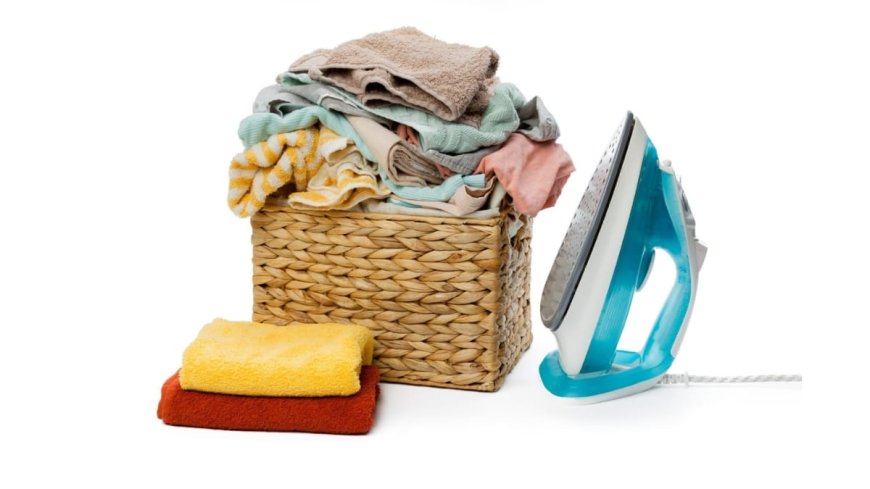Key Features That Make a Difference in Dry and Steam Iron Box
A deep dive into dry versus steam irons—covering soleplate types, steam output, ease of use, fabric compatibility, safety, maintenance, and price.


New Delhi [India], August 30: When it comes to keeping clothes crisp, neat, and ready to wear, choosing the right iron box can make a big difference. With so many home appliances competing for your attention, ironing often feels like a chore, but the right tool can transform it into something quick and satisfying. Among the most common choices are the dry iron box and the steam iron box. While they may look similar, the features they offer can completely change how effectively you smooth out wrinkles.
In this blog, let’s break down the key differences and features of dry and steam irons so you can pick the one that fits your lifestyle.
Heating Mechanism and Soleplate Technology
The soleplate is the foundation of every iron box, and its design plays a crucial role in how well the appliance performs. A dry iron box usually comes with a non-stick or ceramic soleplate that heats up evenly, making it perfect for simple fabrics like cotton and polyester. Since it doesn’t produce steam, it remains lightweight and easy to handle, which is ideal for everyday ironing.
On the other hand, a steam iron box is designed with advanced soleplates that include steam vents. These vents release moisture that penetrates deep into the fabric fibres, allowing you to remove wrinkles quickly and effectively, especially in thicker or layered clothing. If you often find yourself battling stubborn creases, the soleplate technology of a steam iron will give you a clear advantage.
Water Tank and Steam Output
One of the biggest features that sets a steam iron box apart is its built-in water tank.
- Dry iron box: Does not require water. You simply plug it in, adjust the temperature, and start ironing. This makes it hassle-free and travel-friendly.
- Steam iron box: Comes with a water reservoir and adjustable steam settings. You can select a continuous steam flow for everyday clothes or use a burst of steam to tackle tougher creases. Some even have vertical steam functions to refresh hanging garments or curtains.
If versatility is what you want, the steam output feature is hard to beat.
Weight and Ease of Use
Ironing can become tiring if the appliance is too heavy or uncomfortable to use, and this is where weight plays an important role. A dry iron box is generally lighter, making it easier for quick touch-ups and long ironing sessions without straining your wrist.
In contrast, a steam iron box is slightly heavier because of the water tank and added features, but this extra weight can actually be useful. It helps press down more firmly on thick fabrics, reducing the effort required on your part. Ultimately, the choice depends on your ironing habits: if you prefer daily lightweight use, a dry iron is convenient, while for handling larger laundry loads, a steam iron works more efficiently.
Temperature and Fabric Settings
Different fabrics require different levels of heat, and this is where the features of an iron box really matter. A dry iron box generally comes with basic temperature dials that work well for common fabrics like cotton, silk, and synthetics, making it simple and reliable for everyday use. In comparison, a steam iron box offers more advanced fabric settings along with adjustable steam controls, allowing you to fine-tune both the heat and the moisture levels.
This makes it safer and more effective for handling a wider range of materials, from delicate silks and woolens to heavy linens, without the risk of damaging them. If your wardrobe includes varied fabrics, the versatility of a steam iron becomes a clear advantage.
Safety Features
Safety is an essential part of any home appliance, and irons are no exception.
- Dry iron box: Known for their simplicity, some come with auto shut-off functions, though this is less common in budget models.
- Steam iron box: Typically designed with safety in mind. Automatic shut-off when left unattended, anti-drip systems to prevent water leakage, and overheat protection are standard in many models.
These features not only protect your clothes but also provide peace of mind while using the appliance.
Maintenance and Durability
Every iron box needs some level of care to keep performing well over time, but the maintenance requirements differ between the two types. A dry iron box is very low maintenance since it has no water tank or steam vents; you simply need to wipe the soleplate clean and store it properly, making it convenient for users who prefer minimal effort.
In contrast, a steam iron box requires a bit more attention, as the water reservoir and steam vents need regular cleaning to prevent mineral buildup, especially if hard water is used. Though it involves extra steps like descaling, this upkeep ensures the steam iron continues to deliver strong performance and lasts longer.
Price and Value for Money
Your budget can also influence the choice.
- Dry iron box: Generally more affordable and offers excellent value for basic ironing needs.
- Steam iron box: Although pricier due to advanced features, the convenience and efficiency they offer can save time and effort, making them a worthwhile investment.
Simplifying Your Ironing Experience
Both the dry iron box and the steam iron box come with unique benefits. A dry iron is simple, lightweight, and reliable for quick fixes, while a steam iron is versatile, powerful, and ideal for handling a wide range of fabrics.
When selecting the right option for your home appliances collection, consider your ironing frequency, the types of fabrics you handle, and the level of convenience you require. Whether you value simplicity or advanced functionality, choosing the right iron ensures your clothes look sharp, stylish, and ready for any occasion.
If you object to the content of this press release, please notify us at [email protected]. We will respond and rectify the situation within 24 hours.







